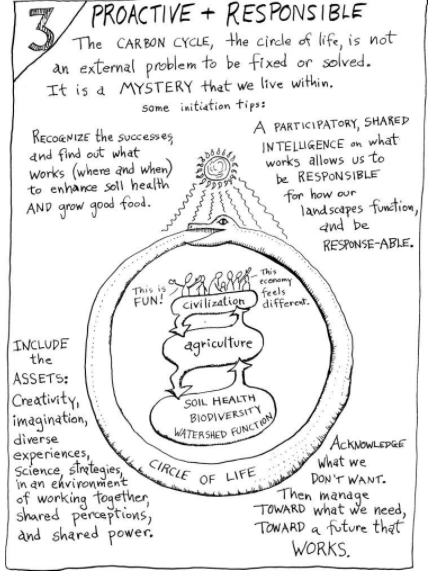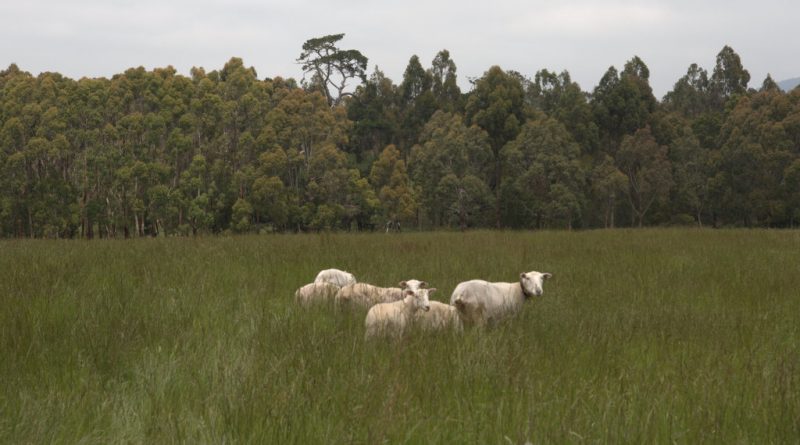Optimism needed – let’s study climate resilience
By Julie Francis
Sometimes it seems that scientists don’t want to hear positive stories about climate resilience. A current CSIRO Biodiversity Knowledge Project survey is trying to ‘build a national picture of the kinds of ecological changes that have been occurring across the country over the past 10-20 years, or more’ and has been seeking input from ‘people with strong links to Australian environments (e.g. farmers).’
What a great opportunity we thought, to share the knowledge of how Moffitts Farm in central Victoria has been transformed since 1990. With significant tree and shrub planting and holistic grazing management, the farm is a net carbon sink. When we’ve seen the neighbours’ paddocks get pugged up by livestock following intense rainfall events, or their pastures and soils dry out under heatwaves or in prolonged dry periods, Moffitts has remained resilient. This particular example is due to our 100% ground cover and minimum pasture quantities of 1200kg of dry matter per hectare at any time. Wildlife has returned in abundance, even in dry periods the frogs are always calling, a new mammal species seems to arrive every few years.
The farm’s livestock productivity per hectare is on par with what is was pre-2000 under conventional input grazing, but the ecosystem functioning is world’s apart from those days. We believe we’ve created a system that is resilient in the face of a changing climate, and we’re finding the system is working well even though our winter/autumn rainfall has decreased by 17% since 1997.
Yet in the CSIRO study, it’s clear that the only change they are expecting is negative change. Whenever you indicate in the survey that you have seen some kind of change, you have to indicate whether you think it was due to land use and/or climate change. The land use options are all negative e.g. clearing, dieback, urbanisation, habitat fragmentation, logging, increased livestock intensity. Or, because they acknowledge the change you saw might be a positive one, you can choose that it was because of a decrease in the intensity of agriculture or forestry, or because of abandoned croplands.
Moffitts Farm shows agricultural and forestry land use change combined with holistic grazing management maintains livestock productivity per hectare without “booms and busts” associated with variable rainfall , keeps costs of production per hectare low while at the same time generates fantastic biodiversity outcomes. We have taken 23% of land out of production for conservation corridors, riparian zone and farm forestry, and the way we manage the remaining land, the pasture, in itself has created habitat for our increasing numbers of reptiles, amphibians, insects, birds and mammals. The connections between pasture grazing management and biodiversity enhancement are far reaching- impacting livestock health, livestock welfare and cost of production. These connections are virtually never made in conventional agricultural science and conservation research because they involve too many variables.
Al Gore said earlier this year that he is optimistic in the face of a changing climate, because although the predictions of the scientists have been correct, progress towards solutions has been even faster and even more dramatic. I think the nation’s scientists could do us all a favour by studying those systems that are improving, that are proving resilient, and helping expand these solutions to other places. At the very least, when talking to farmers about biodiversity, don’t start from the assumption that things are getting worse and it’s agriculture’s fault.
PS August 8 2017. After writing the above article I learned about the Soil Carbon Coalition in the USA, a nonprofit organisation wanting to advance the practice, and spread awareness of the opportunity, of turning atmospheric carbon into soil carbon. They state that a different kind of science is needed, based on shared evidence, open participation, specific locations and situations, and on learning to manage wholes consisting of people, land, and money. Below is one of their cartoons, which relates well to the above article. It is based on the idea that rather than implementing reactive quick fixes to problems, or blaming and fighting each other about the problem, it is time to learn about what reduces atmospheric carbon levels and implement proactive responses.





